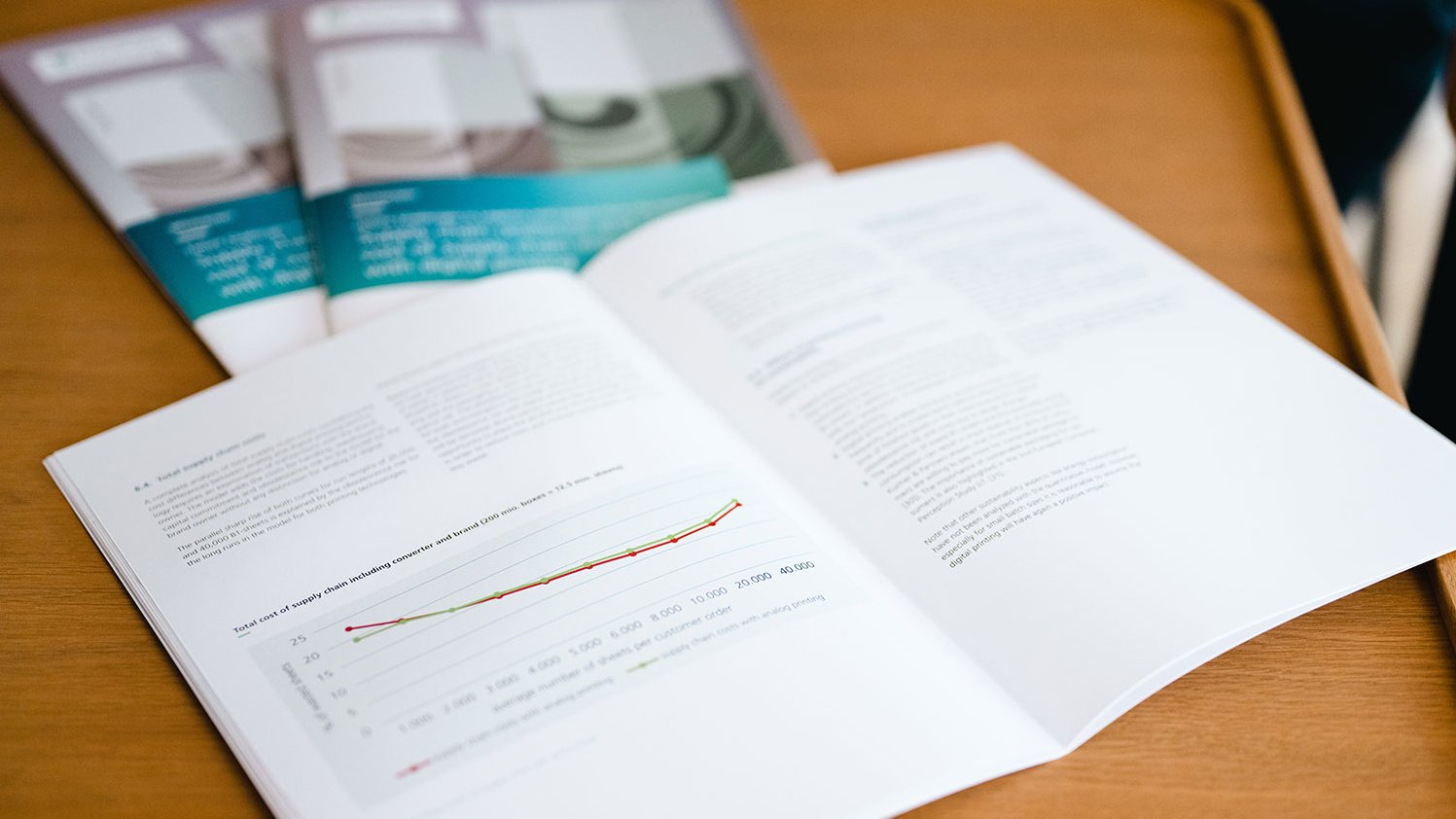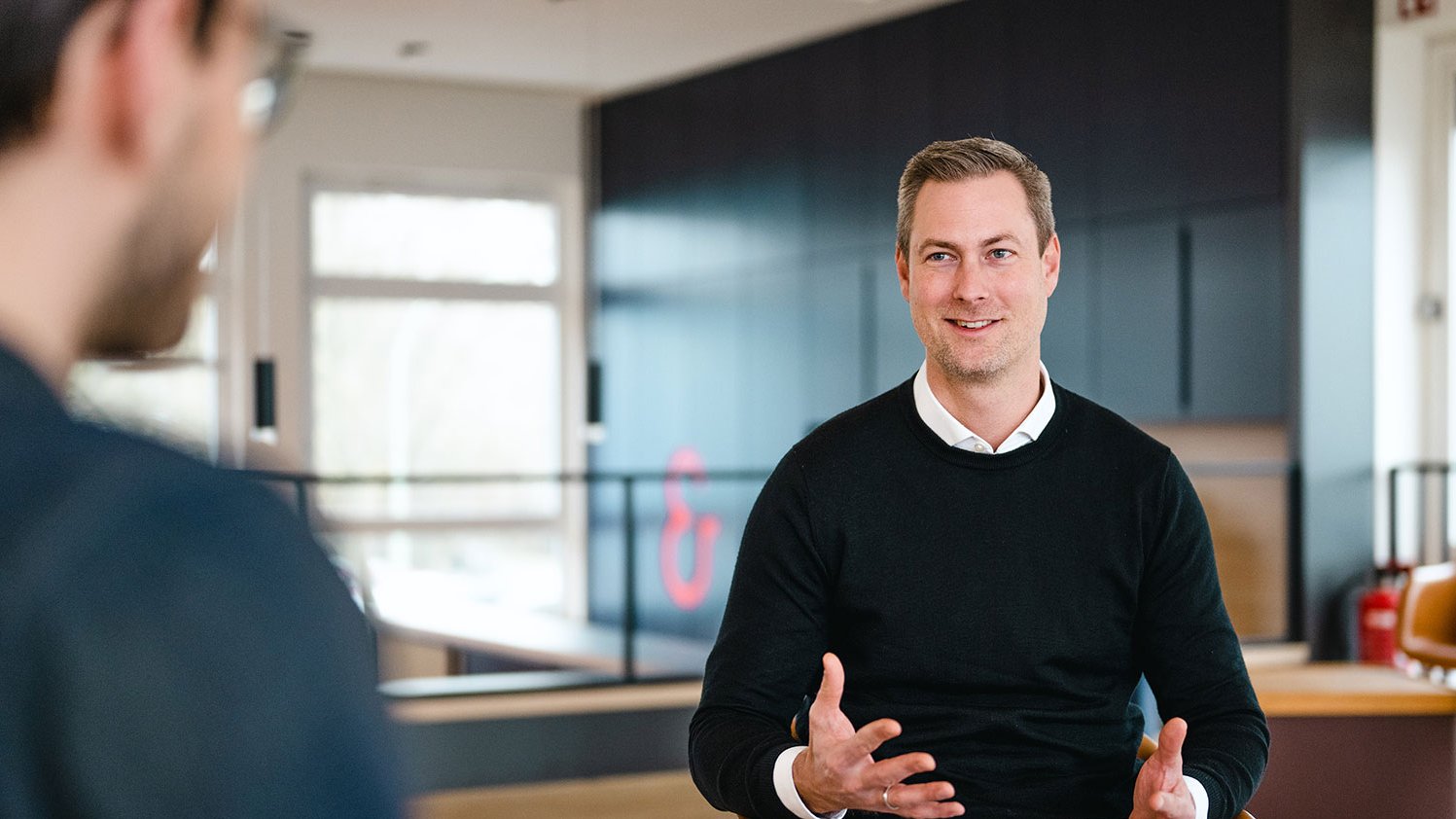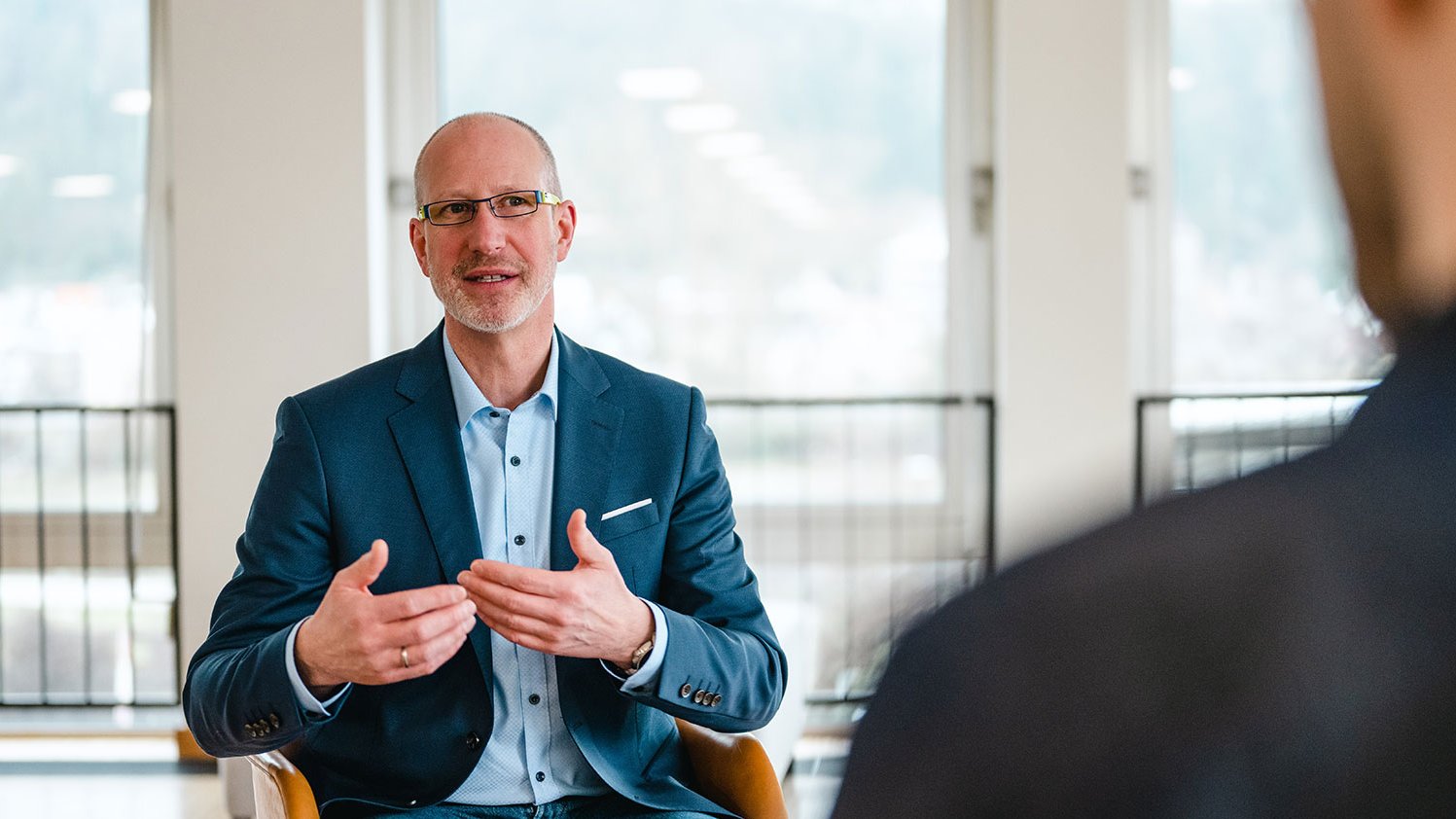How exactly did you perform the analysis?
Jochen Sproll: First of all, it was very important for us to work on this project together with an external partner with corresponding supply chain expertise, in order to obtain a truly objective picture – and we found that partner in the Fraunhofer Institute for Material Flow and Logistics in Dortmund. We then set about developing a calculation model reflecting the entire supply chain. This model was fed with real production data from a printing company, with data relating to the digital printing process from us, and with information covering the whole logistics and supply chain side from Fraunhofer.
Oliver Baar: Being able to work with real production data from an actual printing company brought great benefits. The company granted us unfiltered insights into its processes and its cost and run length structures, which meant that, instead of a purely theoretical evaluation, we could produce a real-life case analysis for an industrial application. This makes the study far more than just a comparison of machine costs – instead, it draws its comparisons across the entire production process, including the associated supply chain. It is simply the case that the upstream and downstream processes, in particular, must play a significant role in any well-founded comparison. And that is what makes the whitepaper so exciting.




